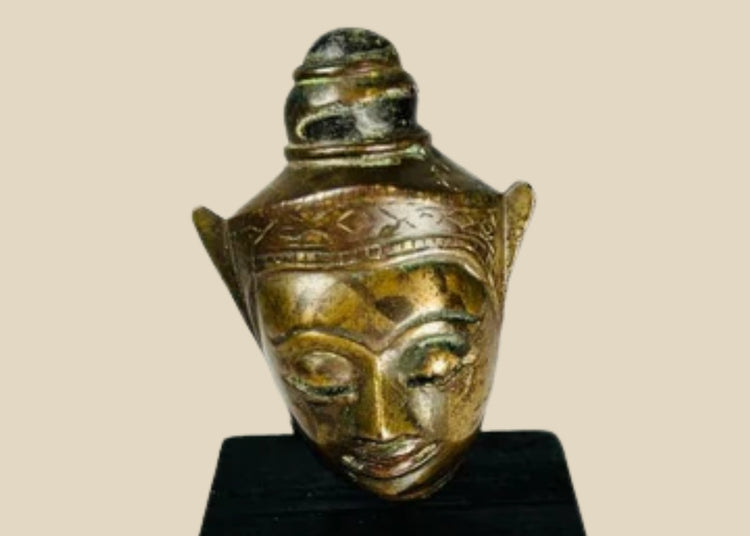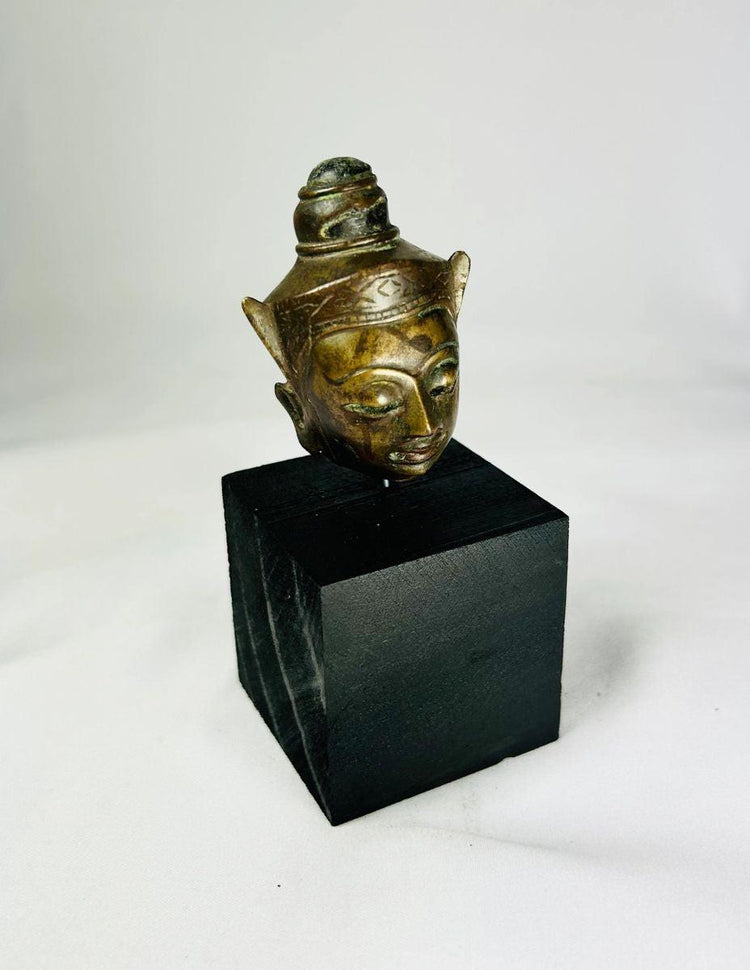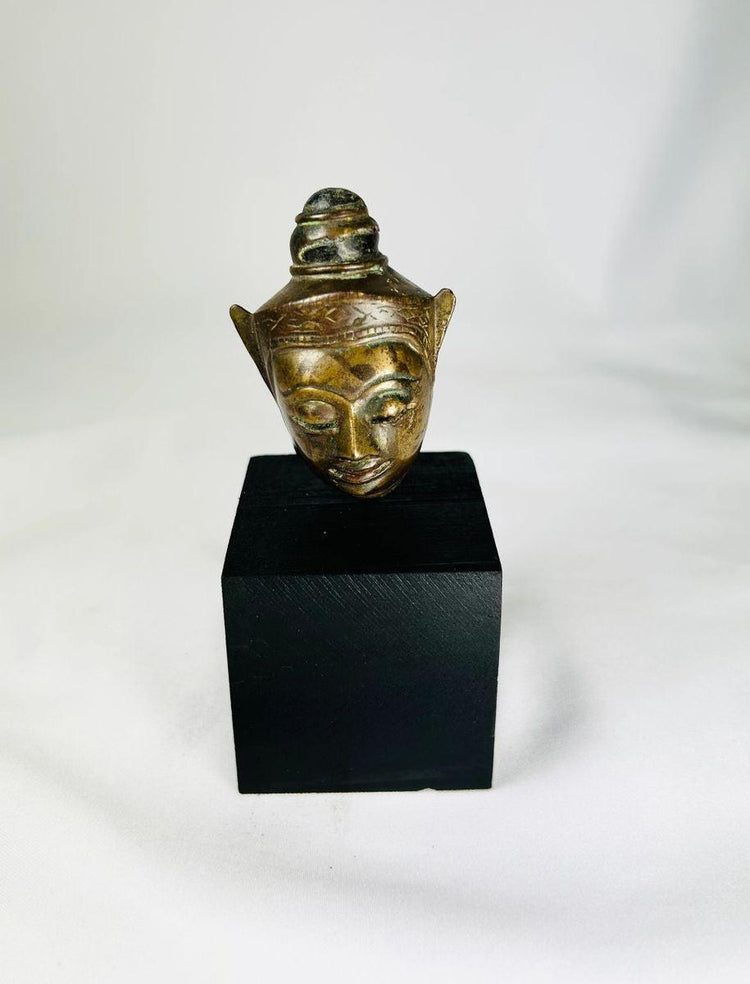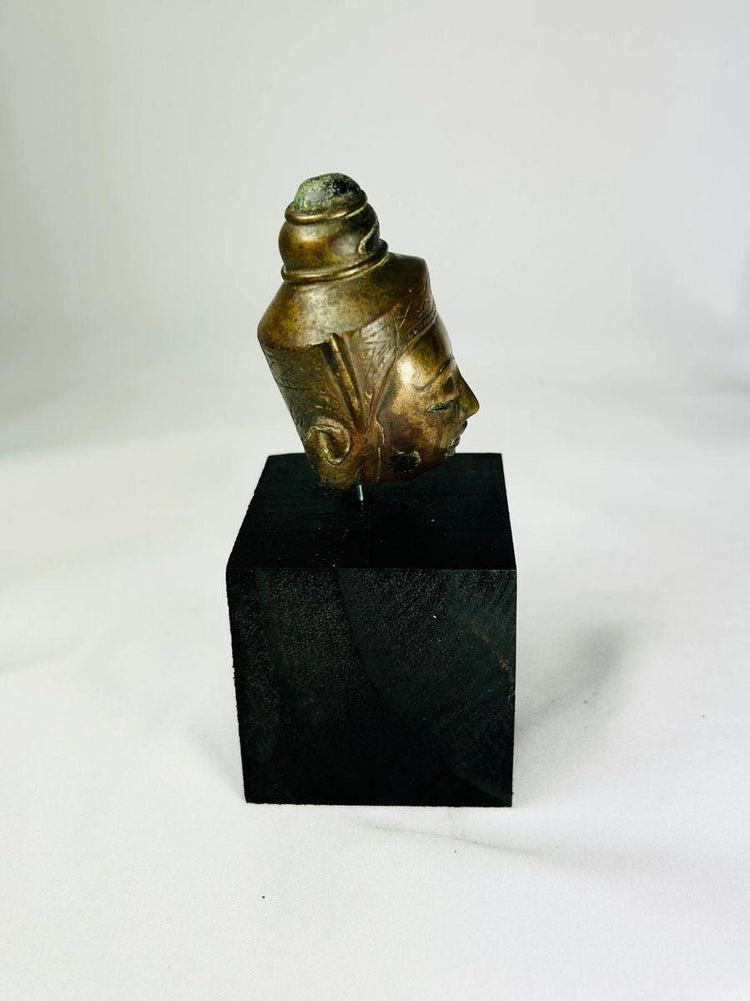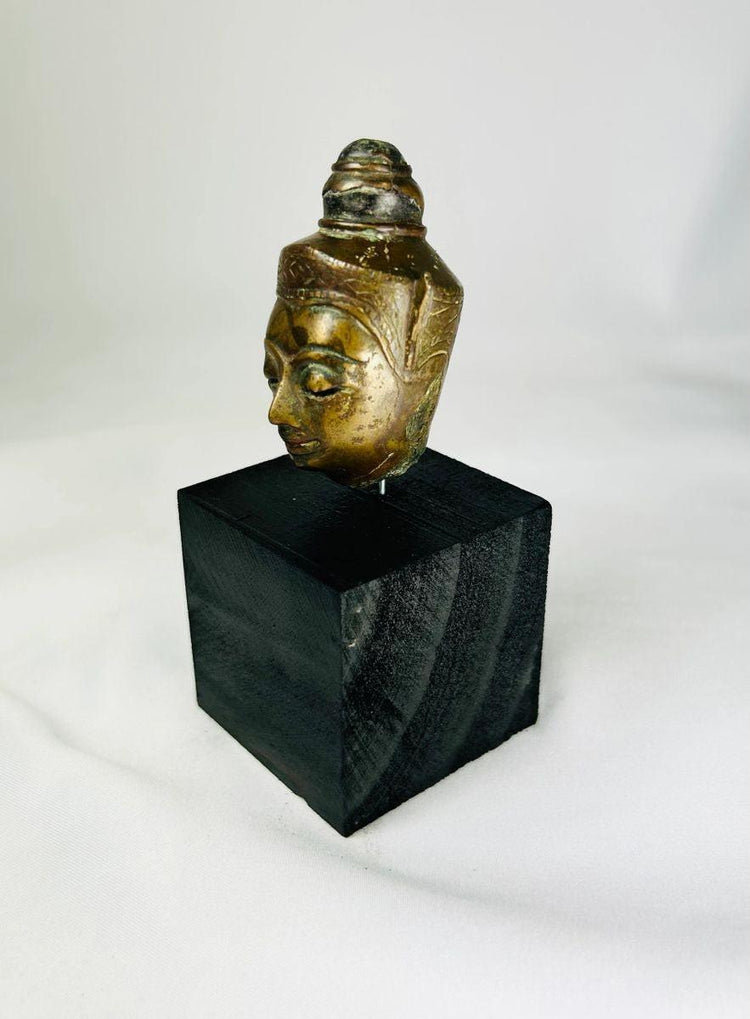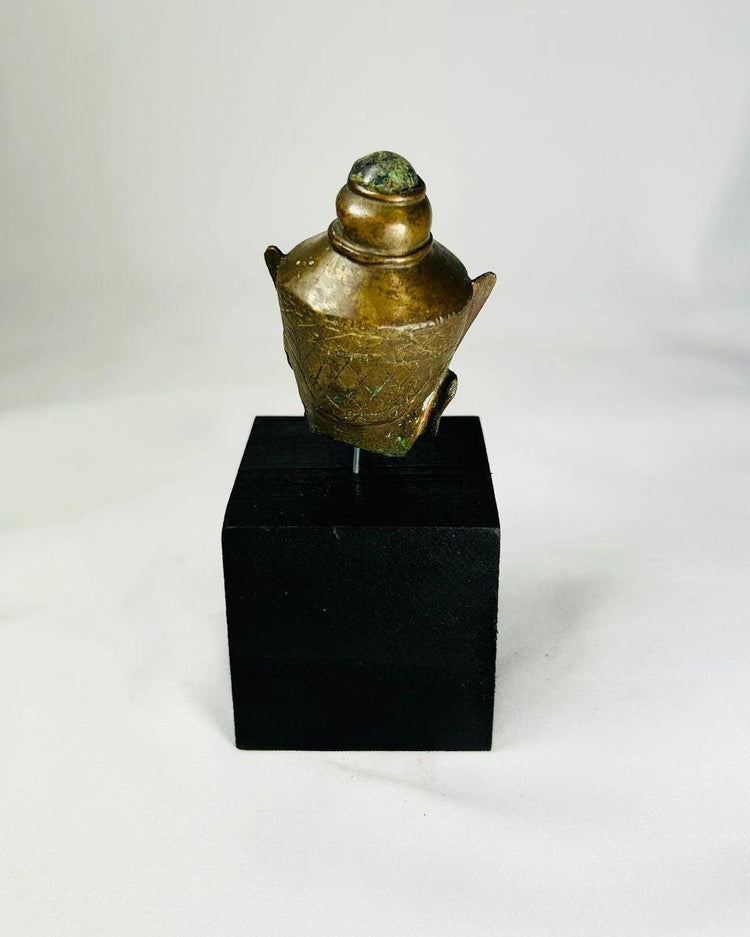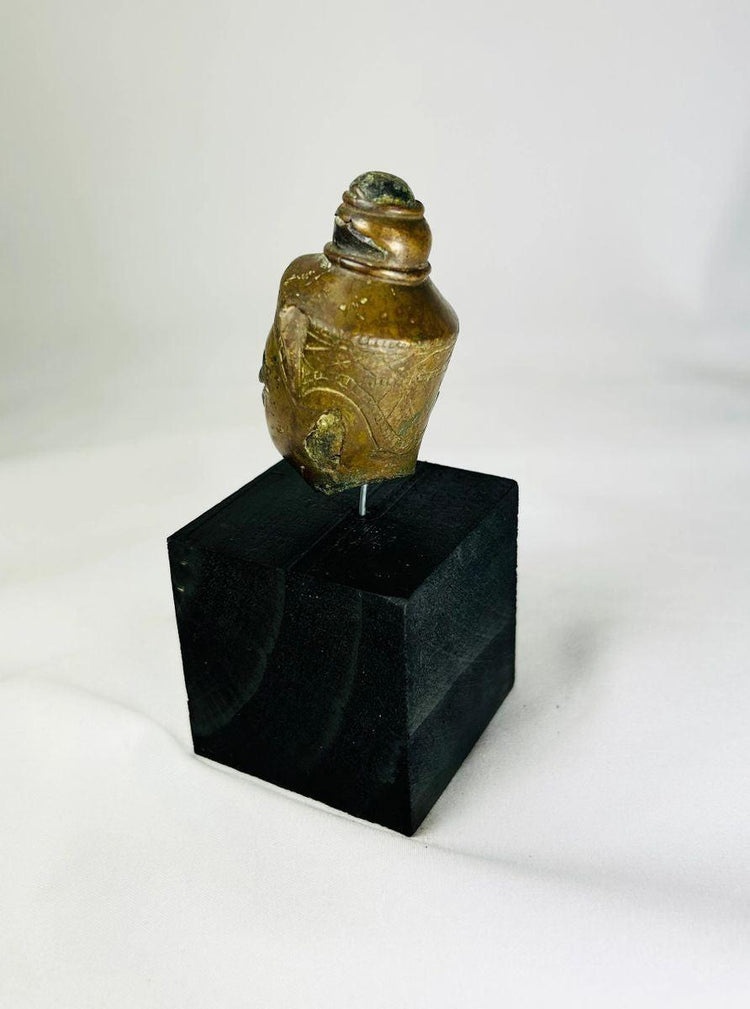Southeast Asian Buddha Head | Crowned with Ushnisha | 18th–19th Century
Description
More
Less
Historical Context & Origin
Region: Southeast Asia (likely Thailand or Cambodia)
Material: Metalic with black-stained base
Period: 18th–19th century
Description
This intricate Buddha head depicts a serene round face with a thin nose and wide arched eyebrows, the eyes half-closed in meditation. The elongated earlobes symbolize the Buddha’s renunciation of worldly possessions and his attainment of wisdom. Atop the head rests a crown with finely detailed relief motifs, while the central ushnisha protuberance represents spiritual enlightenment. The figure is mounted on a black-stained wooden base, which enhances its visual presence and highlights the intricacy of the carving.
Features
- Serene meditative expression with half-closed eyes
- Elongated earlobes symbolizing detachment from the material world
- Ushnisha protuberance representing spiritual enlightenment
- Crown with detailed relief motifs, signifying spiritual authority
- Black-stained base providing contrast and elegant display
Cultural Significance
Buddha heads hold deep symbolic meaning in Buddhist art, representing the enlightened state of the Buddha and serving as a meditative focus for practitioners. The combination of half-closed eyes, ushnisha, and crown embodies both inner peace and spiritual authority, reflecting the transmission of Buddhist teachings across Southeast Asia. Such depictions were traditionally created for temples, shrines, or private devotional use, embodying the ideals of serenity, wisdom, and transcendence.
Condition
The piece is in excellent condition, with fine detailing preserved throughout the face and crown. The surface shows light wear consistent with age, while the later black base provides both stability and contrast for display.
Dimensions (approximate)
Height: 3 in
Width: 2 in
Depth: 2 in
Age
18th–19th century
Learn More
Discover the Meaning and Symbolism Behind the Ushnisha
Description
Historical Context & Origin
Region: Southeast Asia (likely Thailand or Cambodia)
Material: Metalic with black-stained base
Period: 18th–19th century
Description
This intricate Buddha head depicts a serene round face with a thin nose and wide arched eyebrows, the eyes half-closed in meditation. The elongated earlobes symbolize the Buddha’s renunciation of worldly possessions and his attainment of wisdom. Atop the head rests a crown with finely detailed relief motifs, while the central ushnisha protuberance represents spiritual enlightenment. The figure is mounted on a black-stained wooden base, which enhances its visual presence and highlights the intricacy of the carving.
Features
- Serene meditative expression with half-closed eyes
- Elongated earlobes symbolizing detachment from the material world
- Ushnisha protuberance representing spiritual enlightenment
- Crown with detailed relief motifs, signifying spiritual authority
- Black-stained base providing contrast and elegant display
Cultural Significance
Buddha heads hold deep symbolic meaning in Buddhist art, representing the enlightened state of the Buddha and serving as a meditative focus for practitioners. The combination of half-closed eyes, ushnisha, and crown embodies both inner peace and spiritual authority, reflecting the transmission of Buddhist teachings across Southeast Asia. Such depictions were traditionally created for temples, shrines, or private devotional use, embodying the ideals of serenity, wisdom, and transcendence.
Condition
The piece is in excellent condition, with fine detailing preserved throughout the face and crown. The surface shows light wear consistent with age, while the later black base provides both stability and contrast for display.
Dimensions (approximate)
Height: 3 in
Width: 2 in
Depth: 2 in
Age
18th–19th century
Learn More
Discover the Meaning and Symbolism Behind the Ushnisha
You May Also Like




















